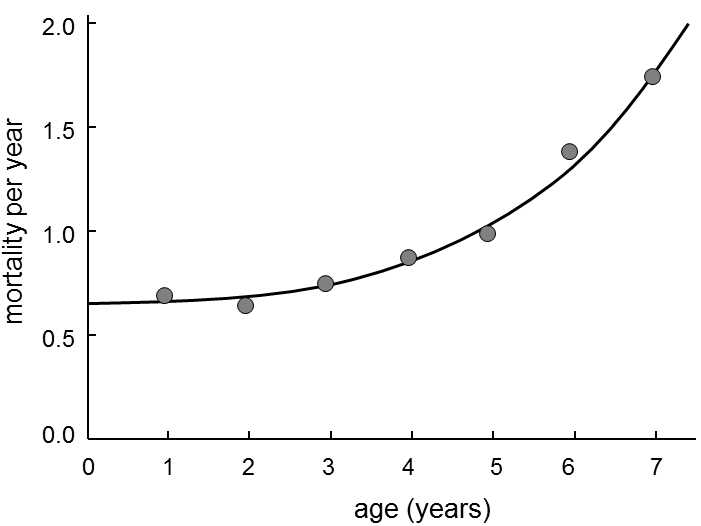XII.6.3 Organisms with very complex and highly integrated structures must necessarily be subject to ageing and death
Single-cell organisms, whose life cycle does not encompass sexual reproduction, could basically be immortal.Their bodily integrity, disrupted by normal use, can be regularly renewed.It is obvious that every individual will die sooner or later as a consequence of random external events, being eaten by another organism or being killed by an unfortunate combination of abiotic factors.From the viewpoint of functioning of the particular individual, such a death is accidental but not necessary.In contrast, where the life cycle of an organism also includes the process of sexual reproduction, necessary for repair of damaged genetic information, ageing and death become a necessary phenomenon (Martinez & Levinton 1992).As the time progresses from the last sexual reproduction, mutations and damage increase in the cells of the individual, leading to deterioration in its functionality (Fig. XII.6).The individual could reproduce nonsexually; however, its progeny would also inherit the deteriorated state of the genome.Repair of the relevant damage, i.e. to overall rejuvenation, can occur only in progeny produced by sexual reproduction (Bernstein 1979).Finally the degree or nature of damage to individuals that reproduce nonsexually is so great that it becomes incompatible with life.

Fig. XII.6 Ageing and mortality in birds. The graph depicts the dependence of the average mortality on the age of the individual in the collared flycatcher (Ficedula albicollis). The fitted curve corresponds to the model m = 0.66 + 0.00235 x3.467 (Weibull model), where m is the mortality (probability that an individual will die in the given year) and x is the age of the individual in years. According to Ricklefs (1998).
In multicellular organisms with very complicated and highly integrated body structure, ageing and death of the individual become a necessary part of the life cycle for one more reason.While organisms with a simple structure can regularly repair their body structures and remove damage incurred as a result of wear and tear, up to the time when irreparable mutations and damage accumulate in their genomes, in more complicated organisms, including more complicated unicellular organisms, body structures exist that can be formed only during a certain phase of the developmental cycle.If these structures are damaged during life, they cannot be fully repaired or replaced and the viability of the individual is permanently reduced.The accumulation of these irreparable and thus irreversible changes gradually leads to the death of the individual.
